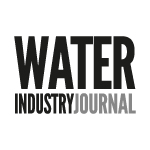By Martin Duff, Business Development Director (Water), Atmos International
Covering 2020-2025, AMP7 saw a focus on environmental investigation, protection and change to reduce average leakage by 15-20% before 2025 in the clean water sector 1,2. In the wastewater sector, there was an increased focus on wastewater pollution, such as combined sewer overflow spills and final effluent discharge.3
Starting from April 2025, AMP8 will see a continuation of priorities from AMP7, such as asset management, climate resilience, leakage reduction and increased water supply resilience for customers, however water utilities’ attention is being increasingly drawn to expanded climate targets, improved stakeholder collaboration and more.
Water utilities in England and Wales are expected to achieve considerably more than previous AMPs in this spending cycle, but what are the implications of this to clean water and wastewater sectors? Atmos’ Business Development Director for water, Martin Duff, takes a look.
Wastewater preparations
Increased public awareness of wastewater pollution paired with growing health concerns over the state of public waterways has put pressure on water & sewerage utilities to reduce pollution incidents.4
In AMP8, it’s anticipated that the outcome delivery incentive (ODI) penalty fine for pollution incidents will increase significantly.5 Pollution incidents in categories 1-3 only carried fines prior to this, but in AMP8 categories 1-4 are all being factored into the penalties a utility could incur.6
Wastewater utilities should anticipate these changes and begin investing in their rising sewer mains to reduce rising sewer mains burst events. While it can be difficult to access the top of a rising main to install instrumentation, the identification and location of rising main bursts in real time will play an important role in reducing the risk of bursts leading to pollution incidents.
Overcoming the access challenges posed by rising mains, we recently developed a single ended leak detection solution for a UK water utility that identifies bursts immediately in rising sewer mains.7
Clean water preparations
Despite the significant progress made downstream of the network to reduce leakage, current methods for calculating trunk mains leakage upstream commonly use the bursts and background estimate (BABE) method however this is outdated and limit data accuracy.
As AMP8 approaches and upstream leakage becomes more of a focus area, even Ofwat themselves recommend that the BABE approach is phased out for more data and technology driven approaches to trunk mains leak detection.8
A technological approach to measuring trunk mains leakage rather than calculating it is on the horizon, with Atmos International (Atmos) recently completing phase one of a trunk mains leak detection pilot project with a UK water utility.
During the initial phase, trunk mains leakage data was collected by our hardware instrumentation for analysis.9
Trunk mains (clean water) and rising sewer mains (wastewater) move different products, sit on different sides of the water network, are measured using different methods and have varying impacts upon pipeline failure eg water supply interruptions in the clean water sector versus pollution incidents in the wastewater sector. However, the way these separate pipelines carry water under pressure via pumped flow is what makes them similar, so it’s possible to use technological approaches in AMP8 that consider both clean water and wastewater networks:
Negative pressure wave (NPW)
When a leak or burst event occurs, a negative pressure wave propagates in both directions of the pipeline. For clean and wastewater networks, the NPW method can identify new leaks and bursts as they form.
Acoustic correlation
For existing leaks, acoustic correlation can analyse sound intelligently to identify existing leaks.
Intelligent flow balance
This method can detect slowly forming and existing leaks using the statistical analysis of flow.
Pressure distribution analysis
When there are small discrepancies in pressure, distribution analysis can use these discrepancies to detect existing leaks.
Transient pressure monitoring
Using high frequency data from the NPW method, pressure transients can be identified to help reduce leakage by improving pipeline operations.
With AMP8 approaching, learn more about how we detect new and existing leakage across the whole water network.
To learn more about our transient monitoring solution, contact us.
References:
1 https://www.atmosi.com/en/news-events/in-the-media/water-magazine-gearing-up-for-amp8/
3 https://www.waterindustryjournal.co.uk/pollution-performance-the-amp-7-challenge
8 https://www.ofwat.gov.uk/wp-content/uploads/2023/05/Leakage.pdf




